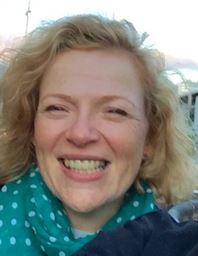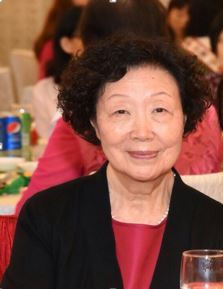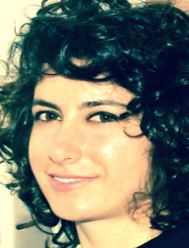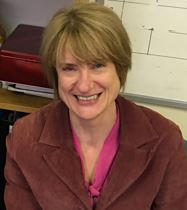International Academic Research
Hamstead Hall Academy & The Hong Kong Polytechnic University
Research Project:
Language and Literacy Professional Development
The Research Team
In an effort to further enhance learning and teaching at Hamstead Hall Academy, a need to improve language and literacywas identified.
In April 2015, a group of teachers at Hamstead Hall Academy collaborated with a team of academics from Hong Kong and the UK on a research project. The research project, Continuing professional development in language across the curriculum: investigating best practices in Hong Kong & UK (1-ZVDZ) is funded by The Faculty of Humanities at the Hong Kong Polytechnic University. Dr Gail Forey is the Principal Investigator working with an extremely qualified and experienced team. In the project, we are interested in finding out how PD on language and literacy works, how it helps teachers support students and whether it leads to improved learning.
Gail ForeyGail is an Associate Professor in the Department of English at the |
 |
John PoliasJohn is an education consultant and an Adjunct Assistant Professor at PolyU. He is co-author of ‘How Language Works’, a professional development course for teachers. He has been an ESL teacher since 1978 at all levels of schooling, a teacher of mathematics and science, and a lecturer in ESL teaching and linguistics at university level and a consultant in language and literacy since 1991. |
 |
Diane PottsDiane is a Lecturer at the University of Lancaster. Her main areas of research are digital literacies and language learning; teaching English as an additional language; multilingualism in mainstream classrooms; multimodality; social semiotics; knowledge mobilization/transfer. |
 |
Chrissie SimonsChrissie is a Research Associate, at PolyU and is taking a lead role in the management and day to day running of the project. She is currently studying on the MAELT at PolyU. Before taking on a research role, Chrissie was a teacher in primary schools. |
 |
Bette LiBette is a researcher and lecturer based at the Department of English at The Hong Kong Polytechnic University and at Lexis Education Australia. |
 |
Didem AydinDidem is a researcher based at the Department of English at the Hong Kong Polytechnic University. |
 |
Rachel ParnellRachel is the deputy head of Hamstead Hall Academy, she is in charge of Learning and CPD and is also a maths teacher. |
 |
Eileen MawdsleyEileen is the assistant head of school at Hamstead Hall Academy, she is in charge of learning and language development and is also an English teacher. |
 |
Helen HandfordHelen is a EAL and language consultant. She is based in Birmingham, but has worked in a wide range of schools, both in the UK and overseas. |
 |
We have only listed the three leading teachers from Hamstead Hall, although many more teachers are involved in the project.
The aims of the research
This research aims to understand how teachers can best support learners in the classroom by focusing on the language that is used in different subject areas.
Language is the key resource used in any subject area to develop and apprentice learners in disciplinary knowledge. Consider the way Maths, Art, PE, Geography and the many other fascinating subject areas offered at school are learned. The main resource for making meaning and constructing knowledge is language - spoken, written and visual. In our research project, when we study how students learn, we take a very broad interpretation of language and view language as a ‘meaning making system’. In this sense, even action is a form of meaning making and we incorporate this into our broad definition of ‘language’. Just like movement and action, art and design also make particular meanings through the image, texture, and organisation of the piece.
However, our main focus is on the spoken and written language used in the classroom to develop disciplinary knowledge. We are interested in understanding how teachers can best be supported to develop and improve their understanding and knowledge of the language of their discipline; and how this informed knowledge can be used in the classroom to benefit learners. As researchers, we have collected evidence about what happens in the classroom, and this evidence helps us to discuss, explain and justify what happens in the classroom, as shown in Figure 1. The evidence is based on video recording of lessons, talking to teachers and students, questionnaires, teaching materials, students’ writing and other documents. We look at patterns in the data and reflect on what’s happening to challenge and improve how teachers teach. Based on what we learn, we plan further studies to find out more. At the heart of all of this work is the learner, as the main aim of the research is to understand how we can help students reach their full potential.
The research team has visited Hamstead Hall Academy three times and collected a large amount of data on each visit. The data we have collected is presented in Table 1.
The Data Collected
|
Interviews (audio recorded) |
Observations & video classroom |
Teaching material |
Documents |
|
|
Visit 1
(1 week April 2015) |
Principal |
English |
Model texts |
planner |
|
Deputy & Assistant Head |
Science |
Lesson plans |
Assessment grades and levels |
|
|
Consultant |
PE |
PowerPoints |
Strategy plans |
|
|
5 Teachers pre-observation |
IT |
Handouts |
|
|
|
5 teachers post-observation |
Geography |
Images |
|
|
|
5 groups of 3 students |
Assembly |
Student texts |
|
|
|
2nd Visit October 2015 |
Deputy & Assistant Head |
English |
Model texts |
Planner |
|
5 teachers from 1stVisit |
Science |
Lesson plans |
Assessment grades and levels |
|
|
|
PE |
PowerPoints |
Strategy plans |
|
|
|
English |
Handouts |
Student texts |
|
|
|
Geography |
Images |
|
|
|
|
Assembly |
Model texts |
|
|
|
3rd visit April 2016 |
6 observed teachers |
PE |
Student texts |
Questionnaire all teachers |
|
2 other teachers |
English |
|
|
|
|
|
Design Technology |
|
|
|
|
|
Maths |
|
|
|
|
|
Science |
|
|
|
|
|
Geography |
|
|
During data collection we distribute consent forms to all involved in the observations, and interviews.
Where students are involved, we collect consent from both the student and their parents. Participation in the research is completely voluntary and all information is treated confidentially. No names or sensitive information has or will be shared with anyone outside of the research team; if anyone wishes to withdraw from the project, they are free to do so at any time.
Now that we have the data, we need to transcribe it; that is, we write word for word what was said in the interviews and in the classroom which is labour and time-intensive work. Then we look for patterns in the data. What we focus on depends on the data we are studying. In the interviews we are interested in teachers’ views and feedback about the CPL and support they have received from the school on language, literacy and learning. In the student interviews we want to find out what they think about the lessons and the school’s focus on language and literacy. In the video observations we are interested in investigating what happens in the classroom and how teachers use the knowledge about language and literacy in their particular subject areas. We are particularly interested in looking at ‘best practice’, so that we can find examples of what ‘best practice’ looks like to show other teachers. In the student texts we are interested in seeing whether the focus on language and literacy in particular subject areas helps students improve their writing, and where possible their speaking, action, design, etc.
An example from the findings
Through our analysis of the data, we can demonstrate how a focus on language and literacy in the science classroom had a positive impact on the students’ writing.
If we compare a student’s writing from an early science lesson (Text 1) with the same student’s writing 6 weeks later (Text 2), we see a huge improvement.
Text 1, Y7 Science, Student 1 (7 February 2015)
The Stig’s Powerlap
For the first 0-10 seconds the car is coming faster than when 10-20 seconds have gone. From 20-30 seconds the speed increases and from 30-40 seconds it’s going faster than it was before. At 50-60 seconds the car stops completely. At 60-70 seconds the speed increases and then the speed decreases at 70-80 seconds. At 80-90 seconds the speed increases more than 70-80 seconds and then at 90-100 it slows down again.
Text 2, Science Y7, Student 1 (7 March 2015)
Interpreting distance = time graphs |
In the first section from time =0 seconds to time = 20 seconds there is an increasing gradient. This means that the speed is increasing. It is called acceleration. The forces on the car must be unbalanced due to the fact that there is less drag. In the second section, from time =20 seconds to time =40 seconds, there is a positive gradient. This means that there is constant speed or uniform motion. Either there are no forces acting on the forces or the car must be balanced.
In the third section, from time =40 seconds to time =55 seconds, the gradient is shallower. This means the spread is slowly decreasing. It is also called deacelerating. The forces are unbalanced because there is less drag. [sic]
Focusing specifically on language choices in the two texts, it’s clear that the nominal group (the nouns - coloured red in the text) are more technical and more scientific in Text 2. For example in Text 1, the student uses the car, the speed and it to talk about what thing is doing the action. However, in Text 2, the same student uses far more scientific nouns such as the an increasing gradient, the speed, the forces on the car, etc., instead of physical objects (i.e.the car). The student is able to write about scientific concepts in ways that they couldn’t or didn’t in Text 1.
Another indicator that shows us that the student’s writing has improved is how they begin each sentence, which we refer to as the ‘Theme’ of the sentence, i.e. what the sentence is about , the point of departure. The choice of Theme in Text 2, as shown in Figure 2 has also become more technical. If we compare the choice of Theme in Text 1 and Text 2, it’s clear to see that in Text 1, the student uses the same Theme and the opening of the sentence is very repetitive. Whereas in Text 2, there is variation, and a lot more detail. There are a number of other language choices that combine to make the language and organisation of Text 2 more scientific.
We believe the improvement from Text 1 to Text 2 is directly related to the science teacher explicitly teaching students about the language of science, and how ‘scientists’ write. The science teacher, like many other subject teachers at Hamstead Hall attended CPL workshops and has been supported by an Education Consultant in developing knowledge and skills to talk about disciplinary specific language. Being able to talk about the choices made in discipline specific language, which we refer to as metalanguage, makes the invisible choices we find in Science, Maths, History, PE, or any other subject visible. In an interview with us, the Science teacher stated that ‘the metalanguage certainly empowers me to talk to students about language in a way I wouldn’t have done before’ (April 2015). Metalanguage, talk about langauge, gives teachers and students shared tools to understand how meaning and knowledge is constructed through language.
The research team, along with the teachers at Hamstead Hall Academy are interested in understanding how differences in teachers’ communication, the ability to talk about language choices, can help learners when they are assessed in GCSE and A’levels. More importantly, the research focuses on how teachers support learners to have a better grasp of language and to be clear about how meaning is made through language in different disciplinary subject areas and in different contexts both in and outside of school.
The CPL offered to teachers at Hamstead Hall Academy has enabled all teachers, from all disciplines to have a deeper, more informed knowledge about their discipline specific language. The language used to sound like a scientist, is very different to the language used in History, or Art, or PE. By investing time and energy in CPL that focuses on language and literacy, all teachers can support students to be better communicators, which is extremely beneficial both at school and in the world beyond.
What’s next..?
The research team will continue to investigate the innovative and ground breaking approach to CPL at Hamstead Hall Academy.
We will continue to analyse student texts to assess whether improvement has occurred and if so what language features have improved. We will continue to talk to teachers, students and those involved in supporting learners to collect views about what is happening and how it might be improved. We will endeavour to understand disciplinary specific language in more detail and review the whole school approach to supporting language and literacy. The drive behind the CPL and the research is the constant resolve to improve education and opportunities offered to students throughout their journey in school and preparing them for the world beyond.
 Hamstead Hall Academy
Hamstead Hall Academy